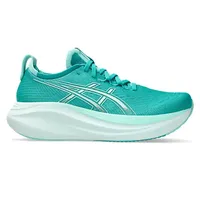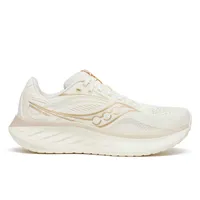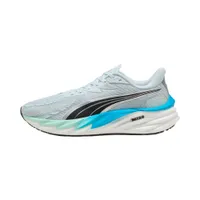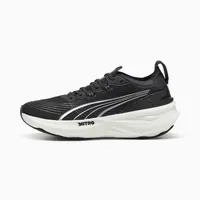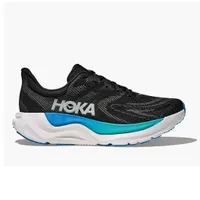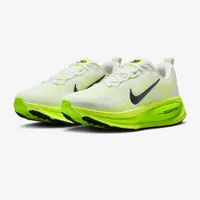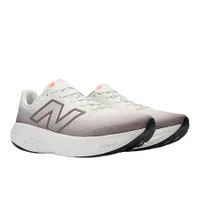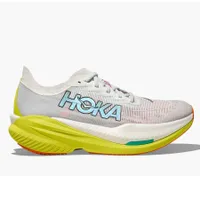There's no such thing as the best running shoes — but here are our top picks, tested by 3 runners
The best running shoes from Asics, Nike, Brooks, and more.
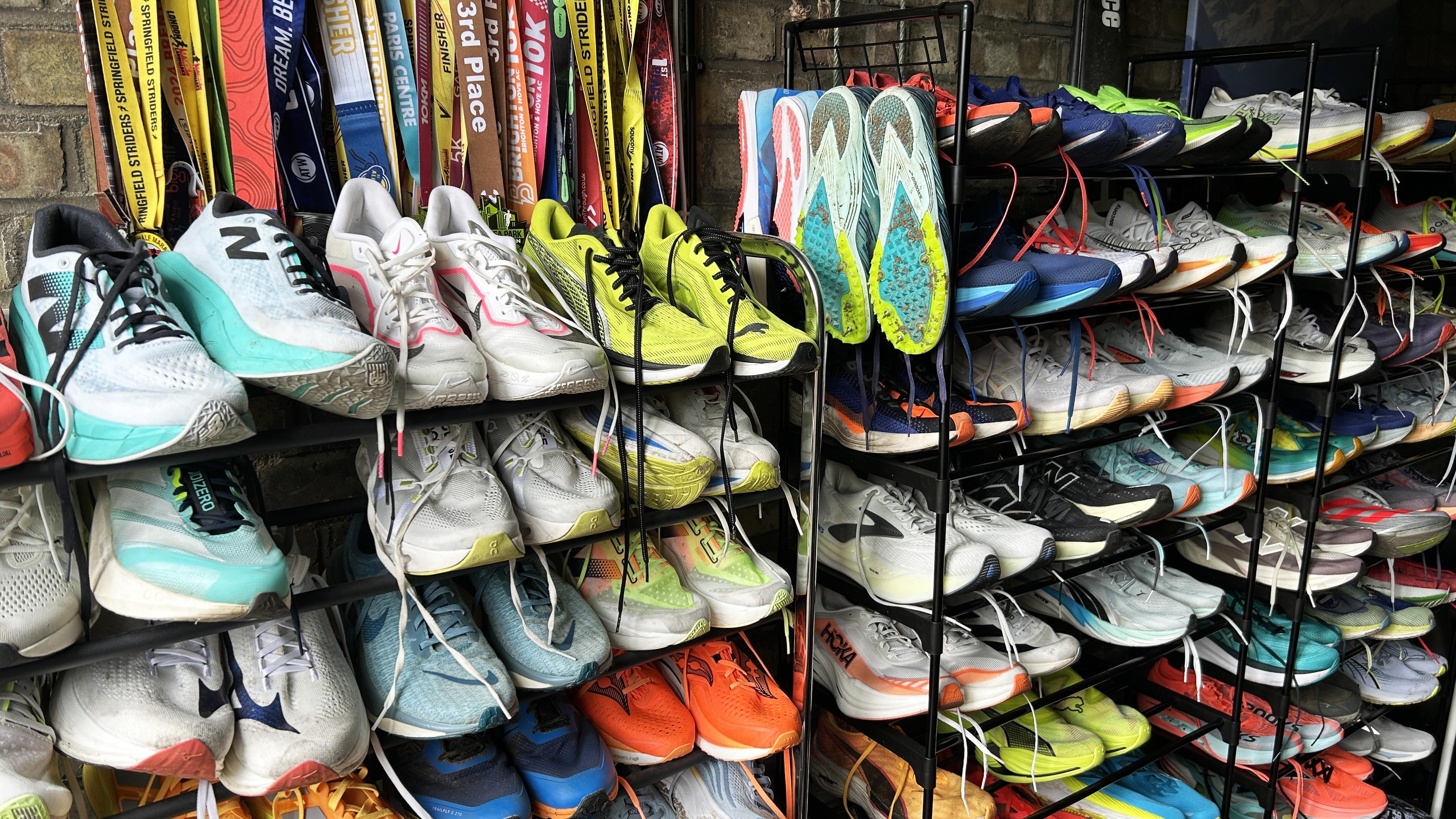
So you're looking for the best running shoes, and you're not sure where to start. The best running shoes will be the most comfortable pair, that best suit your style of running. Below, we've asked Tom's Guide's three resident runners to pick their best running shoes of 2025. We warn you now, they don't agree on many of them.
Nick Harris-Fry: When I ran my first marathon in 2016, I had no idea what I was getting into. I assumed I’d be a ‘one and done’ kind of guy, but it actually unlocked an obsession with running that has led me to rack up 15 more marathons in the years since.
I run a lot, and I test a lot of running shoes. I usually log around 2500 miles and test over 50 pairs of shoes each year. I love running shoes almost as much as I love running, and I also love talking about running shoes, and helping people to find the right shoes for them.
Which is where this guide comes in. I am, however, aware that not everyone runs as much as me, and might not like the same shoes as me.
Jane McGuire: Which is where Jess and I come in. Nick is a lot, right? He knows his shoes, but if you’re thinking this guy is nothing like me, then maybe our running shoe picks might be better for you.
I love a max cushioned running shoe, so my top picks will normally lean towards comfort, rather than speed. My favorite distance is the marathon, and I've run five of them.
Jessica Downey: We also love running and have tested hundreds of pairs of shoes over the years, and will be weighing in with our own top picks below.
I'm also a marathon runner, and while I'm new to the world of carbon plates, I've been running in some of the most popular everyday shoes on the market for years.
Nick: Between the three of us, we hopefully will have a pick or two that resonate with you, because there’s nothing we love more than pairing a runner with their dream shoe.
The quick list
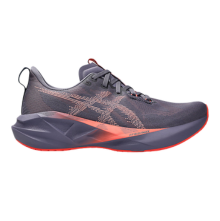
The Asics Novablast 5 is an excellent shoe for new runners thanks to its comfortable, supportive ride. It's well-cushioned, but still lightweight, and has a bouncy and fun feel.
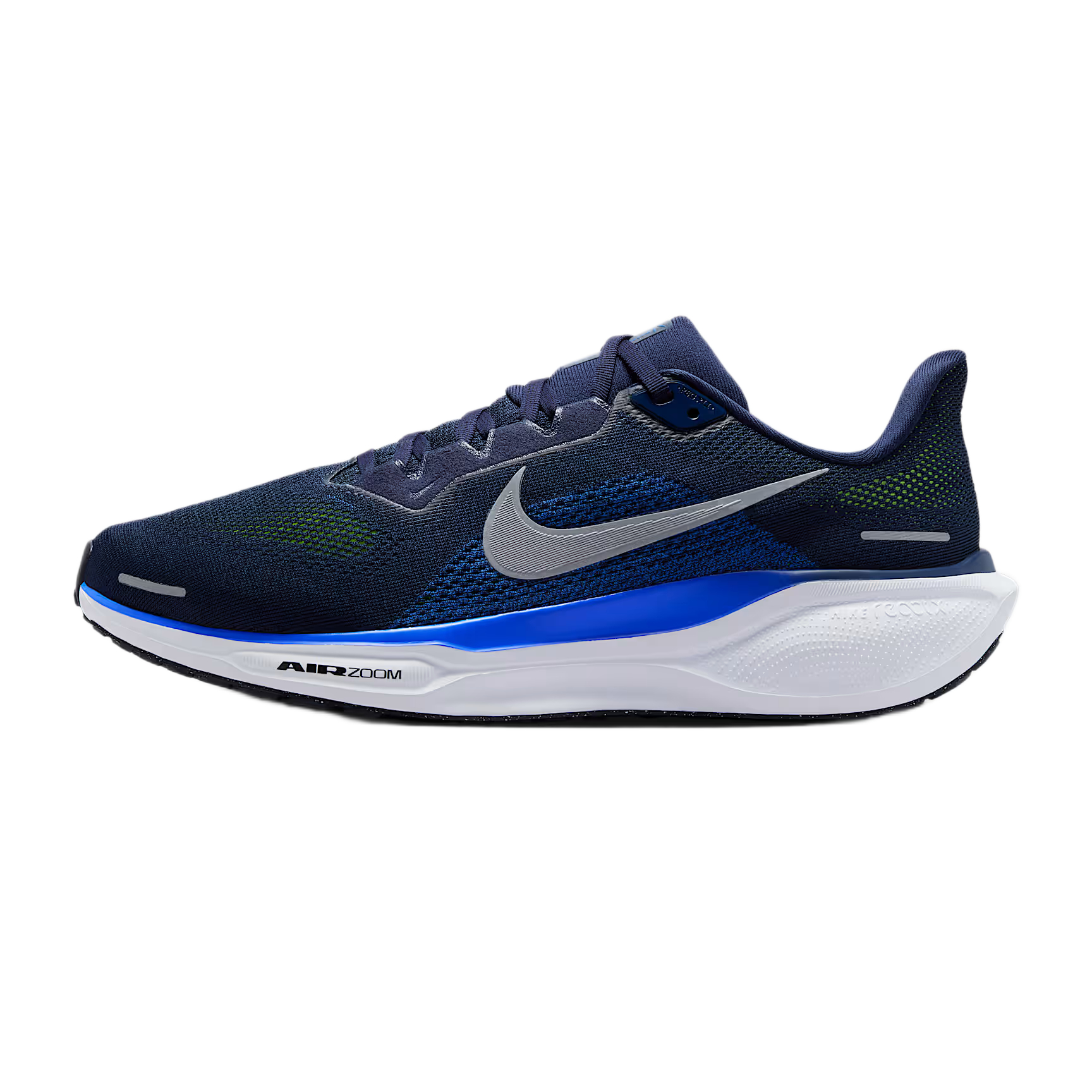
The Nike Pegasus 41 is durable daily trainer that comes in cheaper than most running shoes, and is often included in sales as well. It's comfortable and great for casual use alongside your runs.
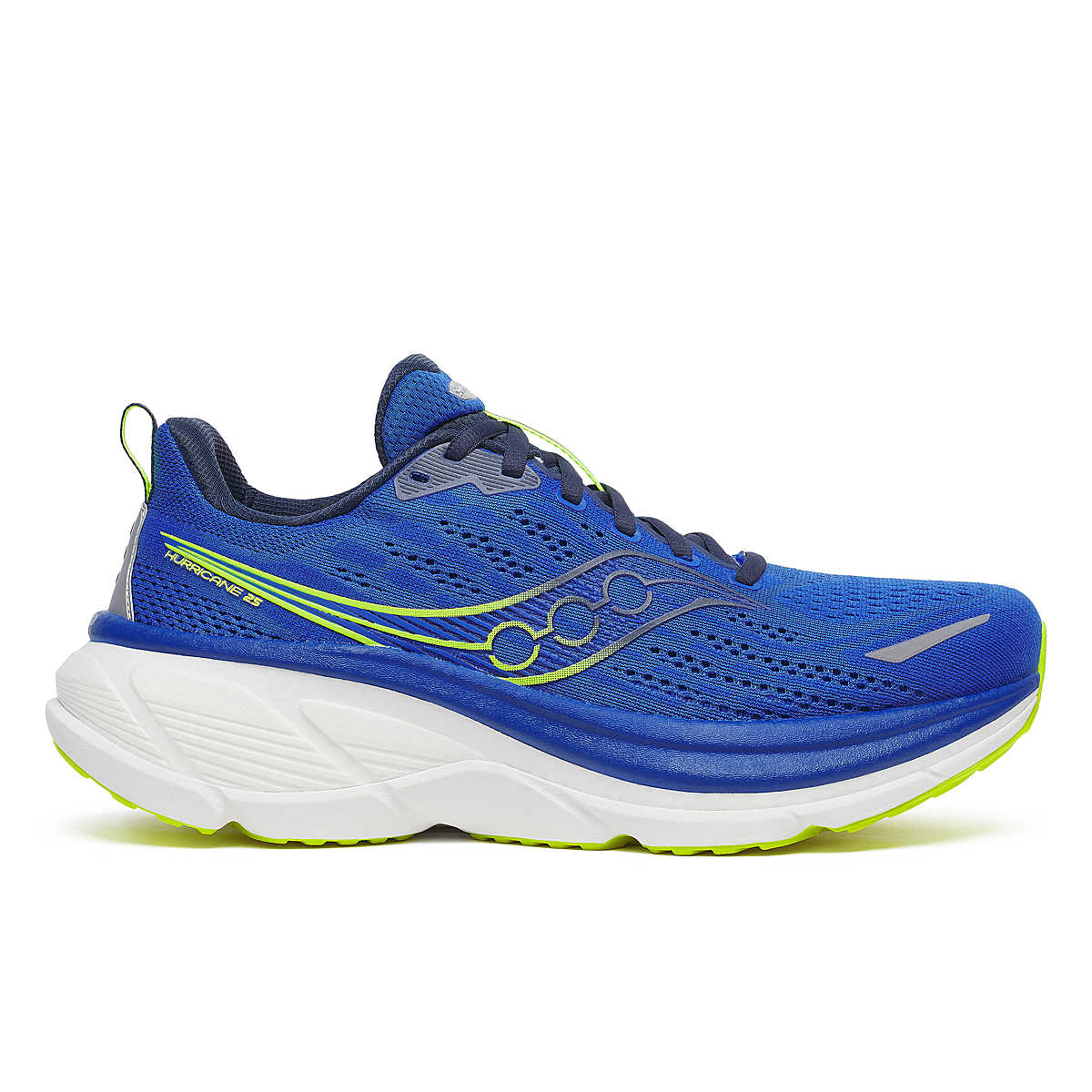
The Saucony Hurricane 25 is an exceedingly comfortable shoe that uses two foams in its midsole to create a stable and soft ride. If you need extra support on the run, it won't let you down.

The mega-stack of foam in the midsole of the Brooks Glycerin Max means you'll never lack for comfort on the run, while the smooth rocker helps you to keep rolling mile after mile.
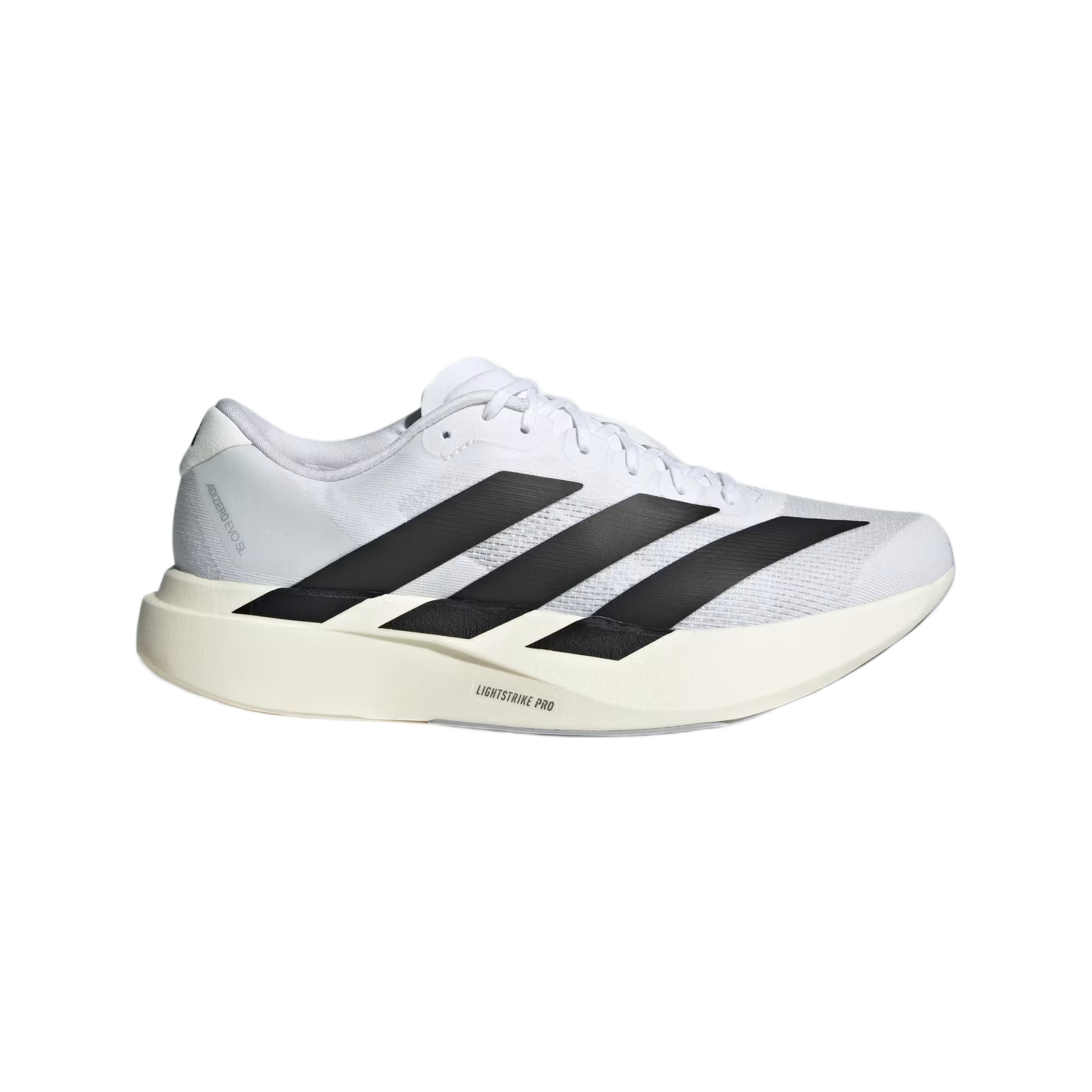
The Adidas Adizero Evo SL delivers a speedy and springy ride for your fast training sessions and races, with a lightweight, rockered design that puts some extra pep in your step.

Nick Harris-Fry made running about 95% of his personality in 2016 and hasn’t looked back since. He’s almost always training for a marathon, and has run 15 of them to date with a PR of 2:25. Nick usually runs 60-80 miles a week and tests a lot of shoes while doing so, and tends to favor versatile shoes that combine comfort and speed.
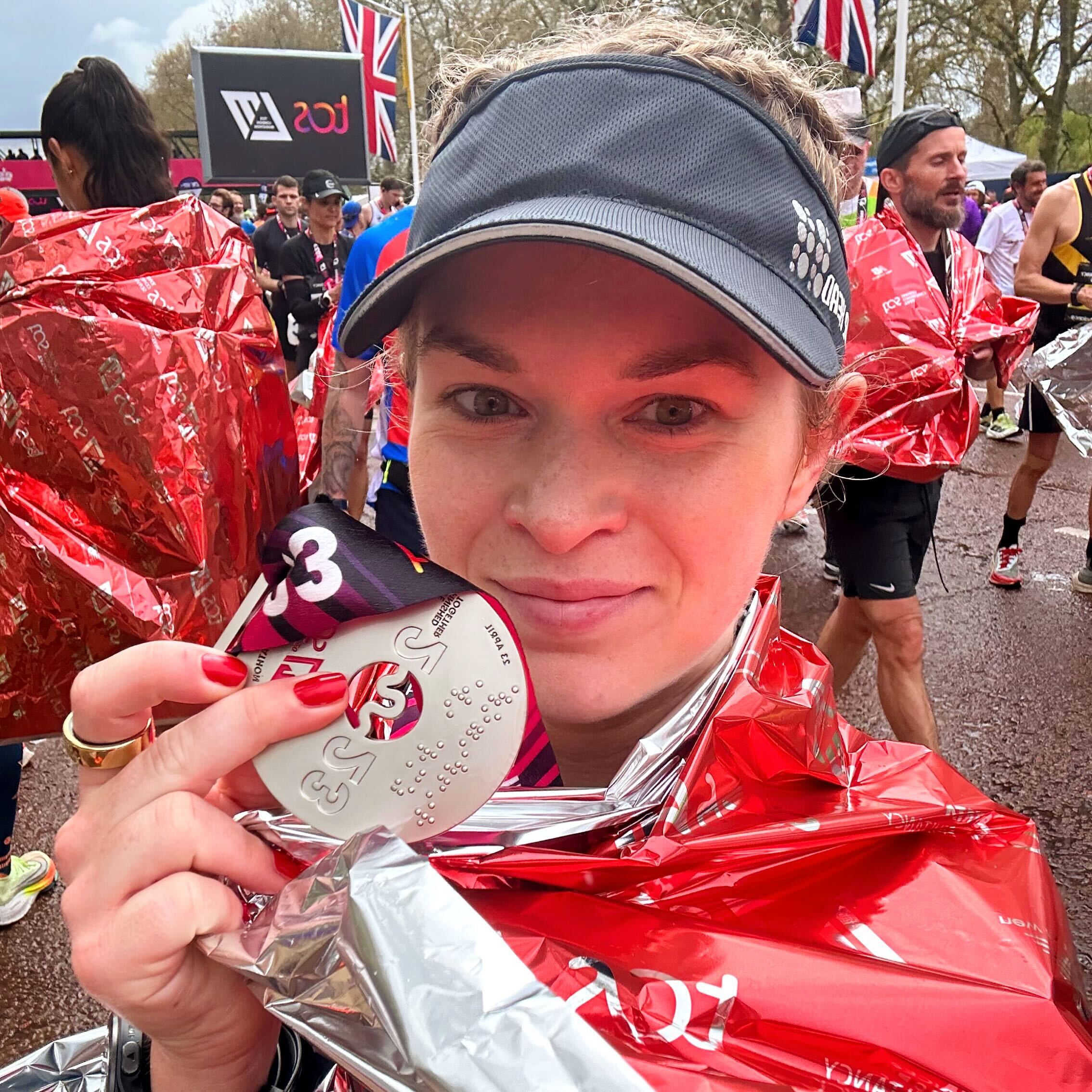
Jane McGuire has been running marathons since she first caught the bug in 2017, and writing about running shoes for a living for the past seven years. Her marathon PR is 3:38, and she'll tell anyone who will listen about her love of the Nike Invincible 3. If it's a max cushioned shoe that Nick gives three stars, Jane will probably love it.
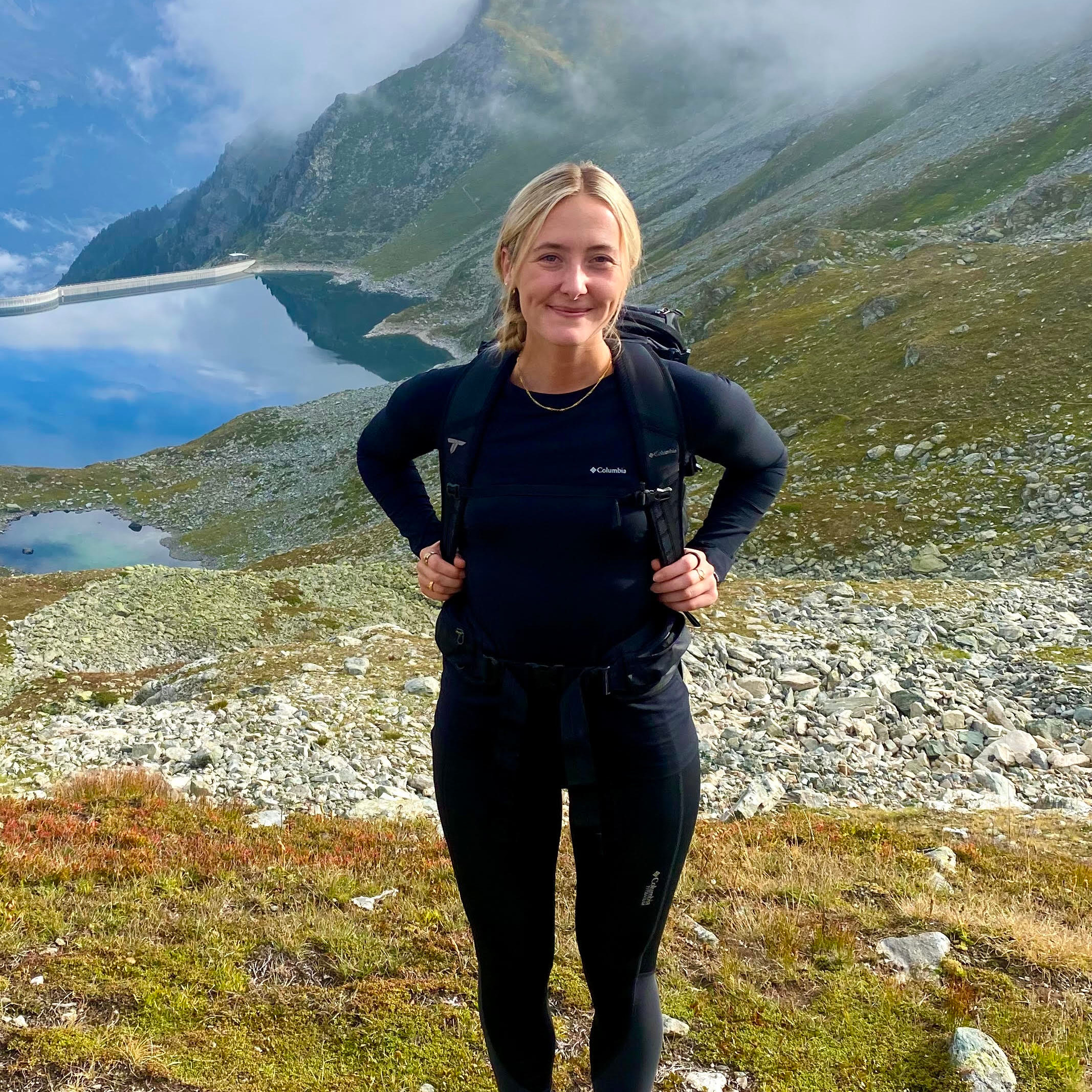
Jessica Downey has kept up with running since childhood, starting with local track meets before moving on to marathons in recent years. She’s completed two sub-four-hour marathons and credits the running shoes she tests regularly for helping her get there. Jessica often wears big, cushioned trainers for long runs but has recently dabbled in the carbon-plated scene to try and catch up with Nick’s marathon PR (don't hold your breath).
How to choose running shoes
Running shoe tastes can be very personal with regard to factors like the level of cushioning, stability, and heel-to-toe drop you prefer, so if you’re starting from scratch, there’s no substitute for going to a running store and trying a few different styles of shoes out.
While there, you can also get your gait analyzed (this is usually free) to see if it’s worth trying stability shoes in particular to reduce the risk of injury. Don’t feel obliged to use them if they don’t feel right, however. When I’ve spoken to physios, they always suggest that going with a shoe that simply feels comfortable for you is your best bet.
Once you have an idea of the style of shoes you like, you can pick out a suitable pair of shoes for your running. That might be a comfortable cushioned shoe for daily training, a stability shoe if you want extra support, or something speedy if you have races in mind.
Of course, not everyone can get to a running shoe store to try out the different options, so rest assured that our picks below are designed to work well for a wide range of people, and are safe bets even if you’re not sure on your own preferences yet.
Here's a breakdown of some of the key terms you might come across in this guide, and when shopping for running shoes:
- Zero drop: The ‘drop’ of a running shoe refers to the height difference between the heel of the shoe and the forefoot. Some shoes will have ‘zero drop,' meaning there is literally zero drop, making them extremely flat to the ground. These are often popular with runners who prefer minimalist shoes or that running barefoot feeling, but if they won’t be for everyone.
- Neutral: In the past, running brands tended to divide their shoes into two different categories: ‘neutral’ and ‘stability'. This was related to whether or not your foot rolled in too far over your ankle as your foot hit the ground (referred to as overpronation). Stability shoes traditionally had a hard, medial post that ran along the inside arch of the shoe. These days, a lot of running brands are moving away from these categories and support has got a lot smarter, but running shoes will still fall into one of these two categories. A neutral shoe is often one that is flexible and cushioned, suited to runners who don’t especially overpronate (when your foot rolls inward as you move) when they run. If you have medium to high arches, you’ll normally find a neutral shoe is more comfortable. But again, the best way to know for sure is to have your gait analyzed.
- Stability: As mentioned above, stability shoes will have some sort of support to prevent your foot from rolling in as you run.
- Carbon plate: This means the shoe has a carbon fiber plate in the midsole, designed to help you run faster. It works, and most of the best carbon fiber running shoes will propel you to a faster running time, but they aren't designed to be worn every day, and will wear out faster than your regular running shoes.
The best running shoes you can buy today
Why you can trust Tom's Guide
Below you'll find our top picks in five categories of running shoes. In each category we've picked out our favorite overall shoe, plus a couple of others that we rate very highly.
Best running shoe for beginners
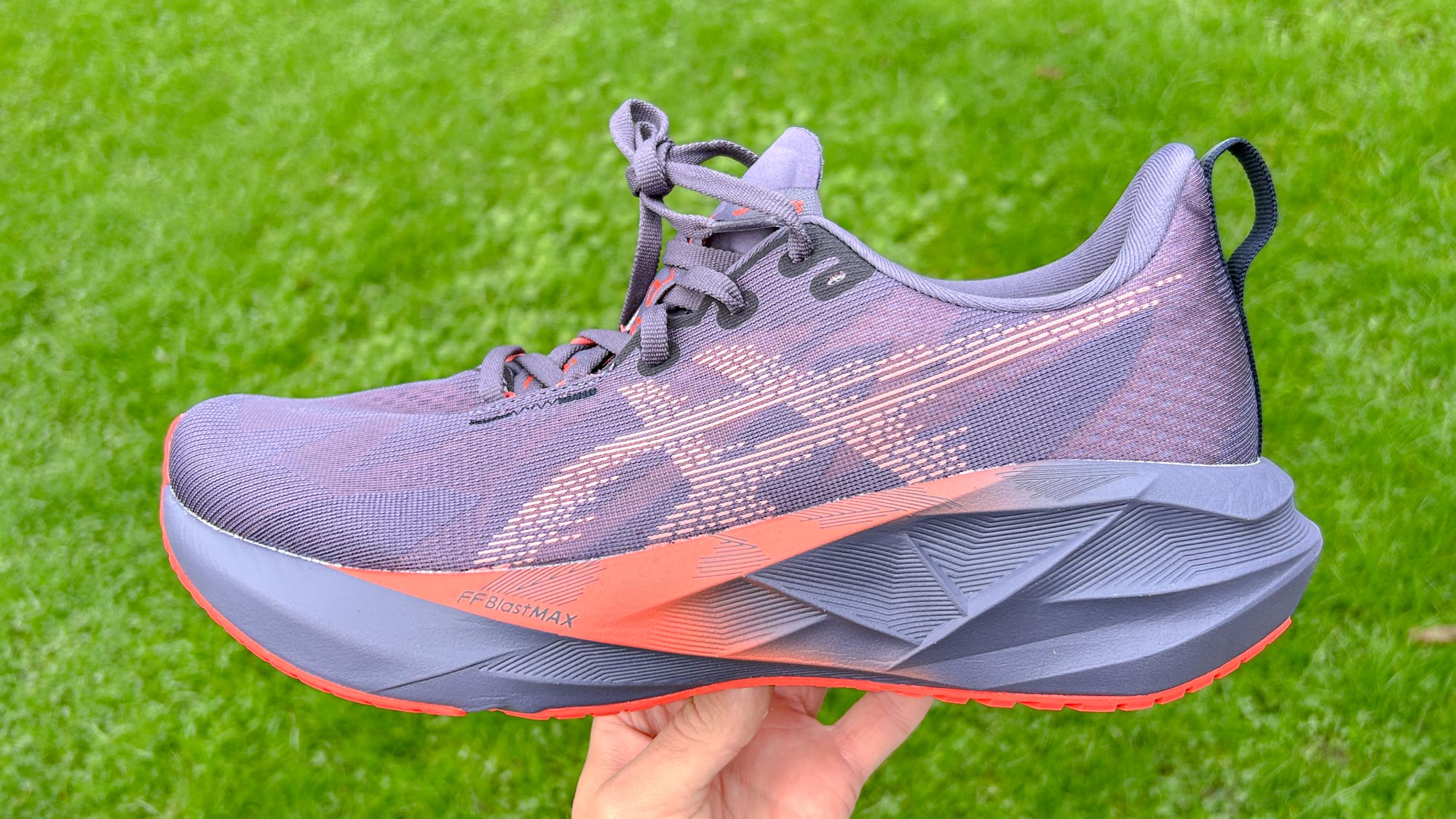
Specifications
Reasons to buy
Reasons to avoid
Nick: If you’re just getting started with running you need a comfortable and supportive shoe to protect you from the impact of the sport, which is exactly what the Novablast 5 is.
However, a lot of shoes do that job and what separates the Novablast from the pack for me is that it’s also a lot of fun to run in. It won’t run the miles for you, but I found that Novablast 5 puts a smile on your face thanks to its smooth, bouncy ride.
It’s also pretty good value, durable, and lighter and more versatile than a lot of max-cushioned shoes like this. That means as you become more comfortable with running and perhaps start to adopt a structured training plan with different types of runs, like interval sessions, the Novablast 5 will be suitable for them all.
Whether you’re embarking on a couch to 5K training plan, or dived in at the deep end and signed up for a marathon straight away, the Novablast 5 is a perfect running shoe for beginners, and it also works well as a cushioned daily trainer in the rotation of more experienced runners.
- Read our full Asics Novablast 5 review
Jane: If you're a beginner, you'll want a comfortable, versatile shoe, and the Asics Gel Nimbus 27 ticks that box. It's super plush, has a nice, soft upper, and feels cushioned underfoot, but has enough snap to cope with faster miles as you gain confidence and add tempo sessions to your training.
Jess: If you are just starting out, comfort and support matter and the Saucony Ride 18 delivers both. The soft, bouncy PWRRUN Plus foam feels light underfoot, helping to take the pressure off your joints as you build confidence. The stretchy mesh upper moves with your foot while the padded heel reduces rubbing that can cut runs short.
Best value running shoe
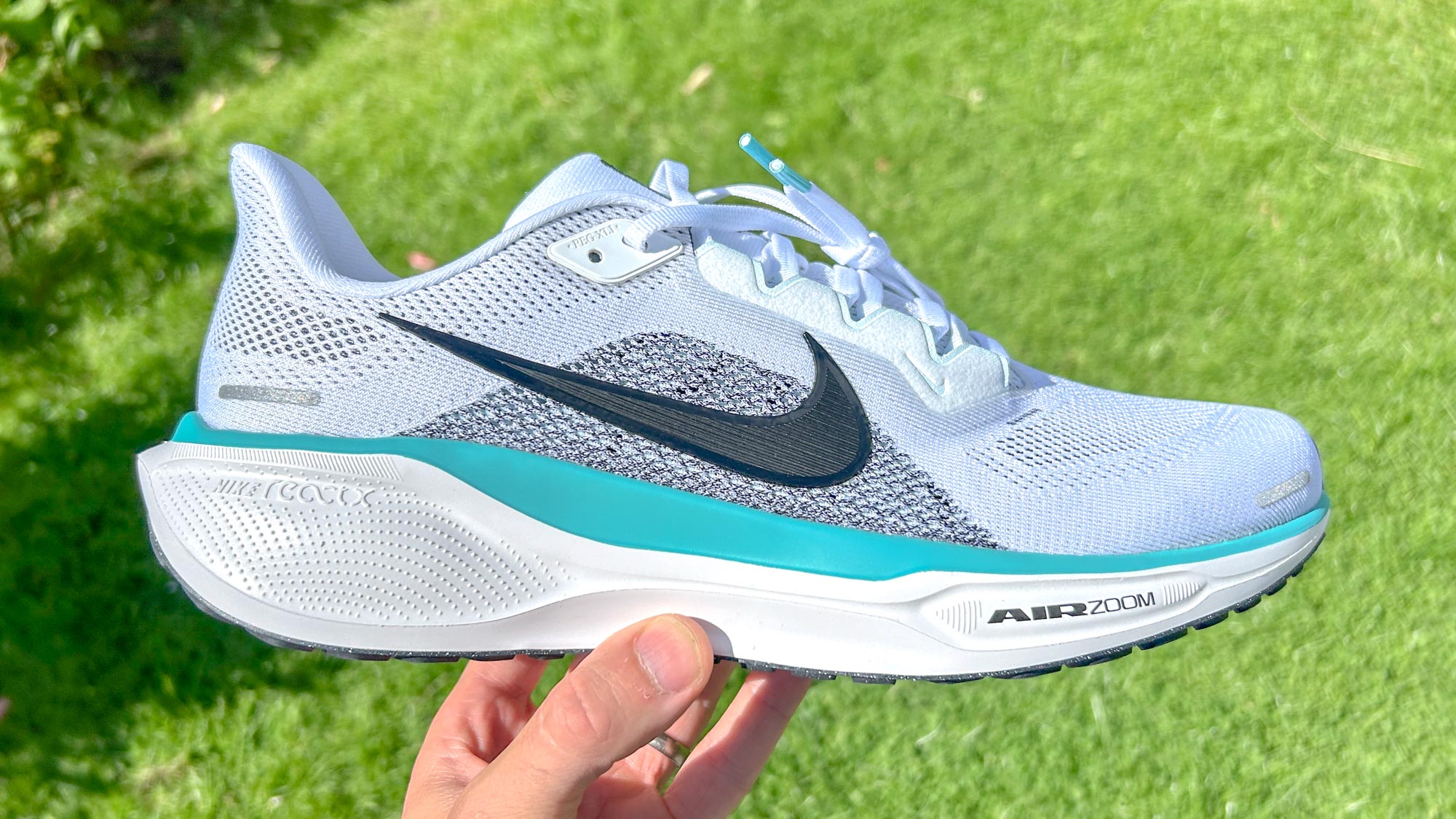
Specifications
Reasons to buy
Reasons to avoid
Jane: I've been writing about the Pegasus since the Nike Pegasus 35, and while that statement makes me feel old, it also allows me to say with some authority that the Pegasus 41 is the best version of the shoe to date. It's a workhorse, and a great choice for beginner runners, and more experienced runners alike.
It's one of the most popular running shoes on the market, and for good reason — it’s well-balanced and can handle a wide range of runs. Plus, it's often on sale, so you can probably pick it up for less than $100.
The 41st Pegasus has a lighter, more breathable upper than the Pegasus 40, while still retaining a decent amount of padding around the tongue and collar. It also contains Nike's ReactX midsole foam, which is softer and bouncier than the React foam used in previous versions of the shoe. There are also two Zoom Air pods under the heel and forefoot, to make the shoe a little bouncier underfoot.
Sure, there are snazzier shoes on the market these days, but the Nike Pegasus is reliable, balanced and comfortable. It's a shoe you'll almost definitely like, and it could easily get you around your first 10K or half marathon.
- Read our full Nike Pegasus 41 review
Nick: The Velocity Nitro 4 is a lightweight cushioned shoe that's great for all kind of runs, and it has an outstanding outsole that's durable and grips well in wet and icy conditions.
Read our full Puma Velocity Nitro 4 review
Nick: The Rebel v5 is a great all-rounder that offers a stable and fun ride. It's exceptionally light given the high amount of cushioning underfoot, and the wide base provides support for long and easy runs.
Read our full New Balance Rebel v5 review
Best running shoe for stability
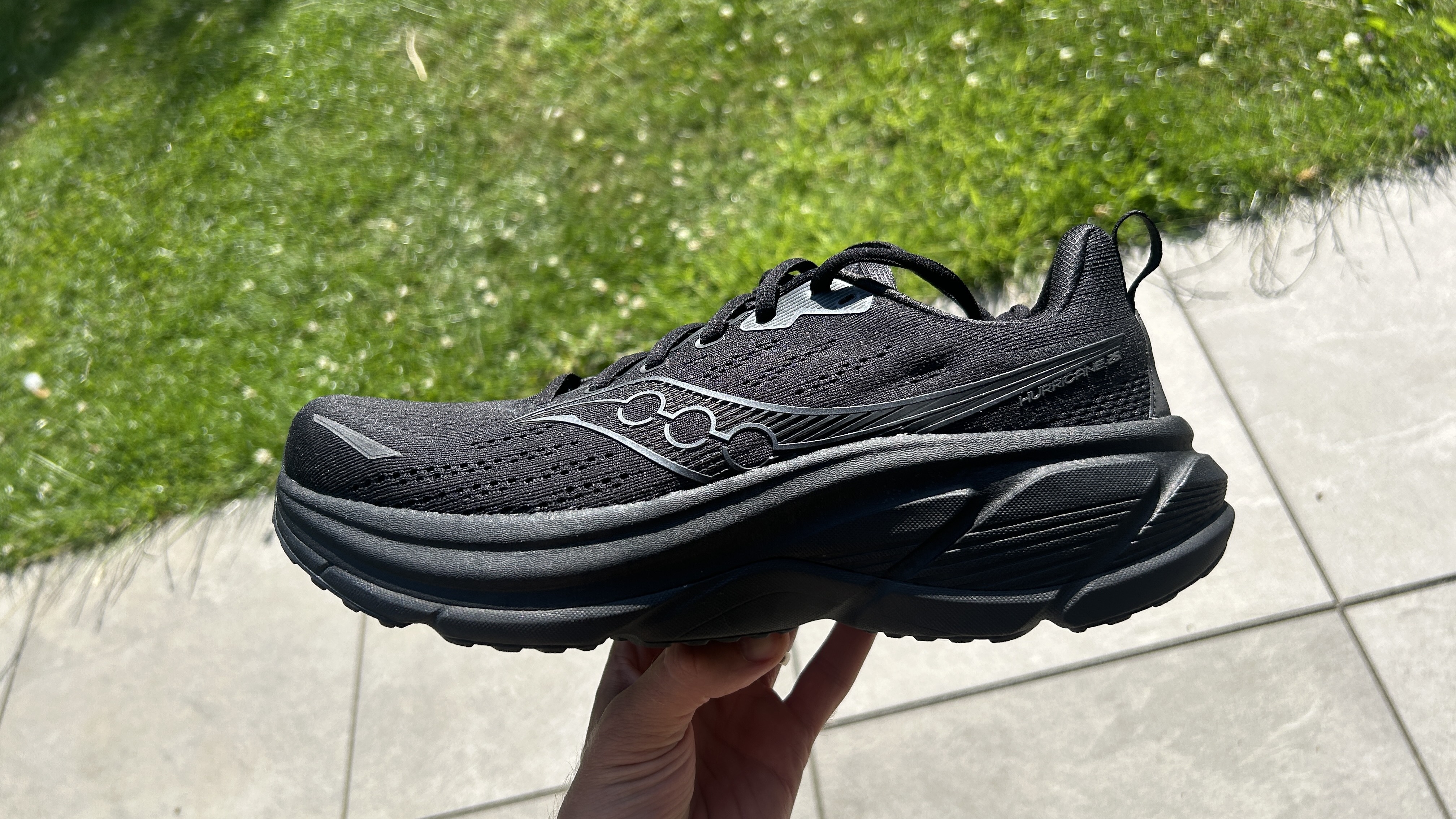
Specifications
Reasons to buy
Reasons to avoid
Jess: I was already a big fan of the Hurricane 24, but the Hurricane 25 took that loyalty to a new level. It looks large and in charge first out of the box, but it is lighter than its predecessor. If you need gentle, reliable support, whether you’re an overpronator, new to running, or returning from injury, the Hurricane 25 delivers.
This stability shoe helps runners who overpronate by guiding their stride into better alignment using Saucony’s CenterPath Technology, which gently encourages your foot to land in a more natural position for improved balance and support. The correction is subtle, so even as a neutral runner, I find it comfortable. The outsole uses XT-900 carbon rubber, a durable material that provides a strong grip and long-lasting wear without making the ride stiff.
I found the Hurricane 25 fits true to size with a roomy toe box that lets my toes spread out naturally. Around the heel and midfoot, it feels secure and locked in, which really boosts stability on longer runs when the legs start to get a little lazier.
The midsole of the sneaker combines Saucony’s soft and springy PWRRUN PB foam with a layer of firmer PWRRUN foam underneath, creating a ride that feels cushioned and energetic while keeping each step steady and supported. Although the upper can feel a little clammy on hot days, the Hurricane 25 reliably offers a smooth and confident ride.
Nick: The ForeverRun Nitro 2 uses a frame of firm foam to provide stability, while a bouncier core midsole material creates a sprightly ride for daily training. Like other Puma shoes, a bonus here is the excellent outsole.
Read our full Puma ForeverRun Nitro 2 review
Nick: The Hoka Arahi 8 uses an H-frame in its midsole to provide support on both sides of the foot, creating a stable ride despite the soft foam. It has a very smooth ride, and has been one of my surprise favorites of 2025 so far.
Best cushioned running shoe
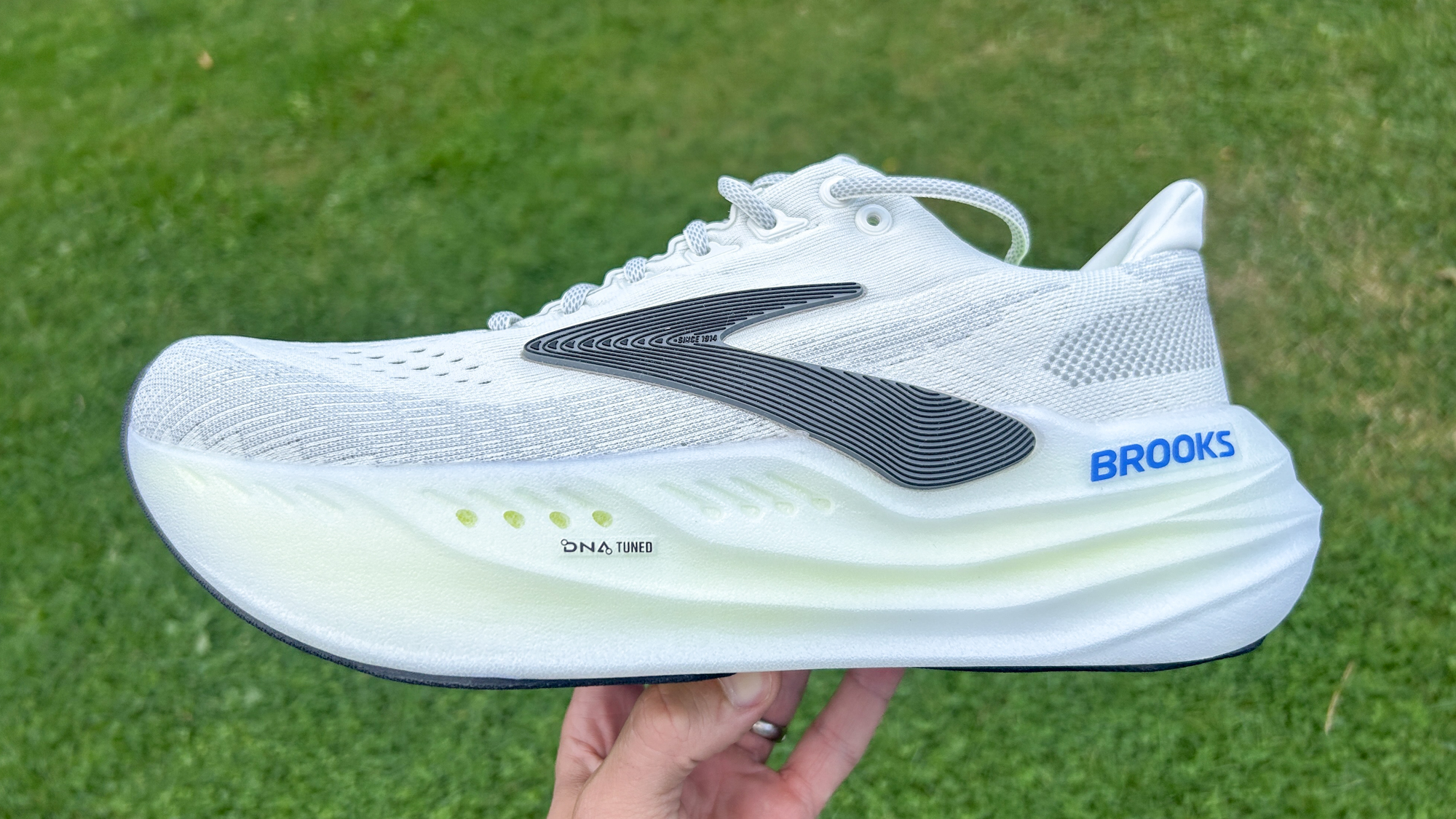
Specifications
Reasons to buy
Reasons to avoid
Jess: I’m a sucker for a cushioned shoe, and the Brooks Glycerin Max hits the mark. With 45mm of foam in the heel and 39mm in the forefoot, it puts a serious layer of padding between your foot and the pavement. It might look bulky at first glance, but once you’re running, that plush feel makes easy miles and long recovery runs far more enjoyable.
The midsole uses Brooks’ nitrogen-infused DNA Loft v3 foam to keep things light without losing responsiveness. A softer foam at the heel helps absorb impact, while firmer foam in the forefoot gives a touch of spring as you push off.
Fit-wise, it’s roomy and relaxed, with plenty of space in the toe box for your toes to spread naturally. The padded collar and tongue boost comfort, while the upper holds your foot securely to keep things feeling stable, even with all that cushioning underfoot.
It’s not the shoe I’d grab for a fast workout or race, but when comfort is the goal, the Glycerin Max delivers a smooth, supported ride that makes running feel easier.
- Read our full Brooks Glycerin Max review
Jane: As I mentioned above, I have a long-term love affair with the Nike Invincible 3, so you can imagine my heartache when it was discontinued. The Vomero 18 is a rebound shoe, but it's a good one. It's plush, comfortable, and more stable than the Invincible. It's pretty heavy, but if you're looking for plush, sink-in comfort, this one ticks the box.
Read our full Nike Vomero 18 review
Nick: The 1080v14 is a cushioned daily trainer that offers a great balance of comfort and weight. It's not as maxed out on cushioning as the Glycerin Max or Vomero 18, but still highly comfortable and moves a little more smoothly as a result of its nimbler design.
Read our full New Balance 1080v14 review
Best fast running shoe
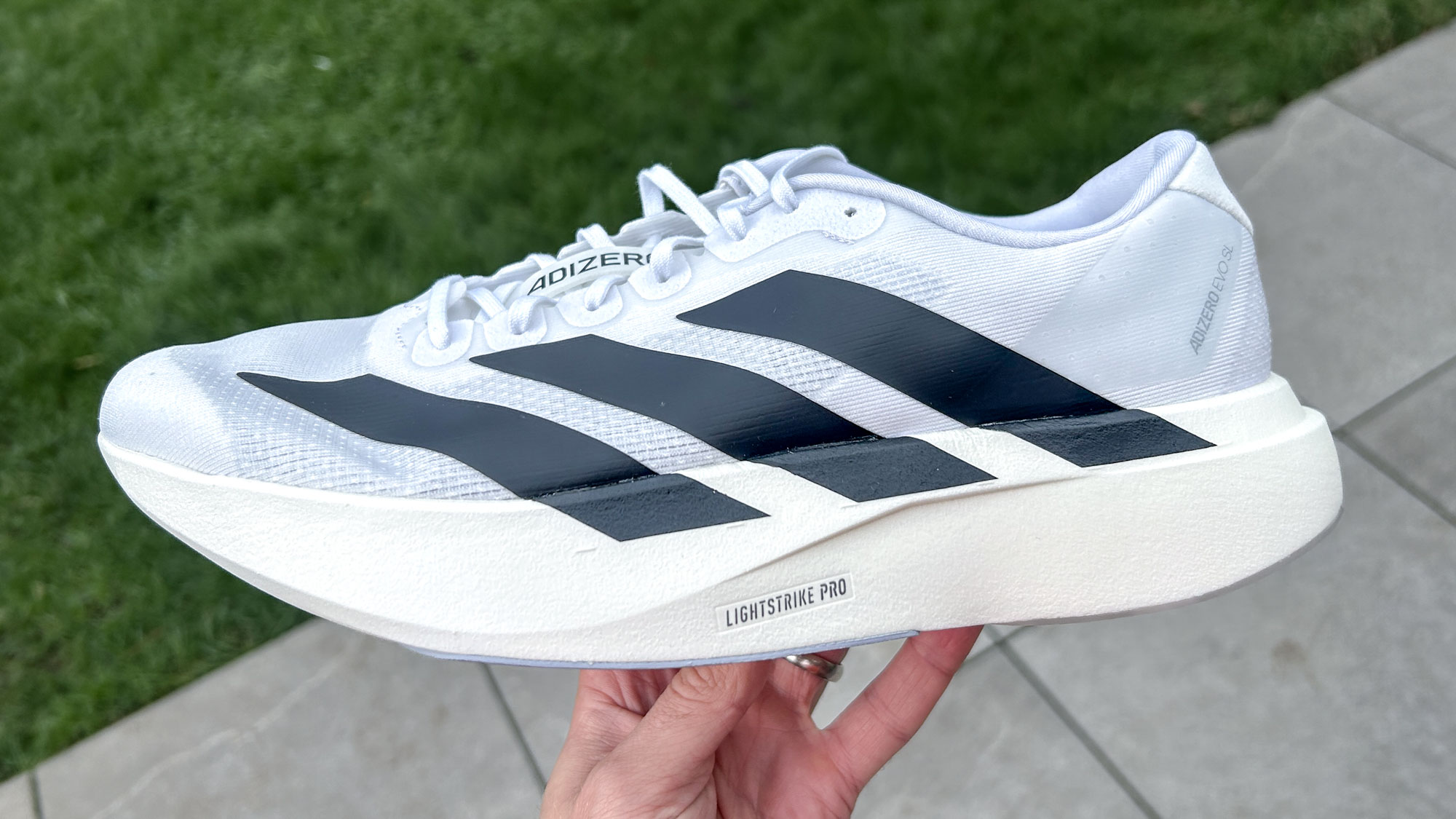
Specifications
Reasons to buy
Reasons to avoid
Nick: Welcome to my personal favorite category, where I get a chance to extoll the virtues of my favorite fast training shoes. The Adidas Adizero Evo SL is an easy top pick here — I’ve logged over 100 miles in the shoe and it’s my favorite shoe of 2025 so far overall.
It’s extremely light, fast and fun to run in. I’ve used it for 400m reps on the track, long tempo runs, and a whole load of easy and steady running as well.
While the Adidas Evo SL is not the most stable shoe, especially compared to some of the more cushioned options in our other categories, it's comfortable for long distances and retains its bouncy feel no matter how far you run.
Given the high quality of materials used — the Evo SL has the springy Lightstrike Pro foam in its midsole used in Adidas’s top racing shoes — it’s also a good value shoe, and has held up well to my running so far, with no signs of wear and tear.
- Read our Adidas Adizero Evo SL
Nick: Me again! I have some other top picks for this section and have commandeered it entirely. If you wanted a plated training shoe to provide even more propulsive speed, then the Hoka Mach X2 is my top pick. The Mach X2 is almost as quick as the best carbon plate running shoes and fun to use for your fastest training session or races.
Read our full Hoka Mach X2 review
Nick: Another plated shoe I feel obliged to mention in this category is the Saucony Endorphin Speed 5. It uses a nylon plate to be more comfortable than a carbon shoe, and you really can use it for every kind of run, from recovery jobs to races. It’s more stable than the Evo SL and Mach X2 as well, though less cushioned and comfortable over long distances.
Read our full Saucony Endorphin Speed 5 review
Get instant access to breaking news, the hottest reviews, great deals and helpful tips.

Jessica has been a fitness writer at Tom’s Guide since 2023, bringing three years of experience writing about health, fitness, and the great outdoors. Her passion for exercise began during her childhood, where she spent weekends hiking and competing in local athletics club events. After earning a master’s degree in journalism from Cardiff University, Jessica found the perfect way to combine her love of storytelling and fitness into a career.
Jessica is passionate about testing fitness gear and tech, using her reviews to help readers make informed buying decisions. She ran her first marathon in April 2024, finishing it in 3 hours and 48 minutes. Through her training, she’s developed a deep understanding of what it takes to grow as a runner, from effective workouts and recovery techniques to selecting the right gear for every challenge.
When she’s not at her desk, Jessica enjoys spending time in the kitchen crafting new recipes, braving cold water swims and hiking.
